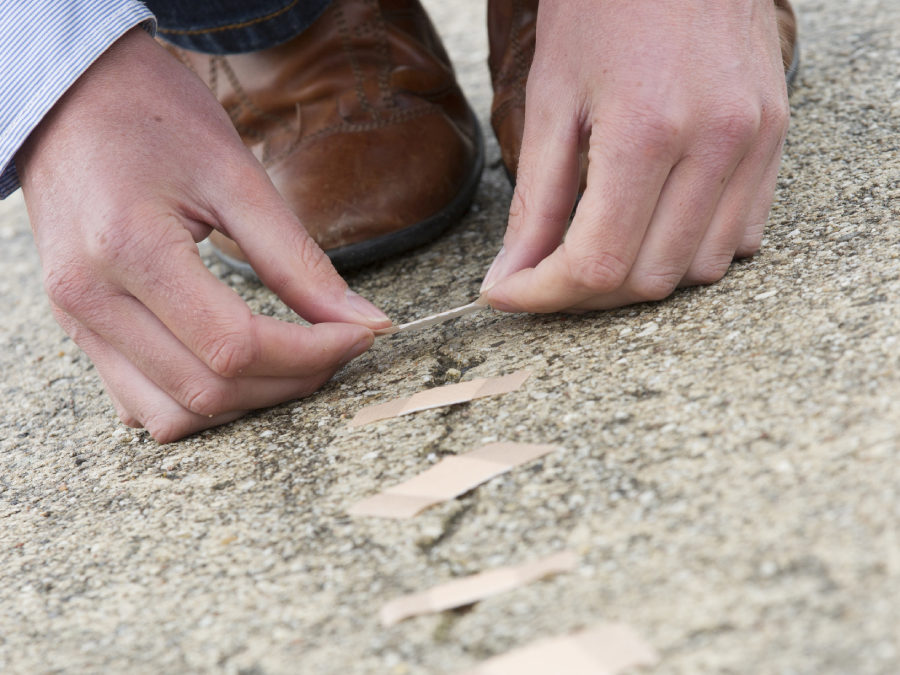Signs That Your Driveway Needs to Be Replaced

Frequently Asked Questions About Liquid Limestone
June 28, 2019
Choosing the Right Pool Deck and Patio Materials
October 23, 2019Nothing can quickly deteriorate a home’s curb appeal than a crumbling driveway. Maintaining the value of your property starts from the outside and you want a driveway that looks immaculate and inviting. While driveways can last for decades, you will need to replace it eventually. Here are some signs to look out for to find out whether or not your driveways needs a new makeover.
Visible cracks all over the place
Cracks are a telltale sign that your driveway needs to be replaced. This is a common issue that appears on both asphalt and concrete surfaces. Over time, harmful substances like gas and oil penetrate the driveway surface and exacerbate any cracks that have already formed. If you live in an area with freezing temperatures during winter, there’s a good chance that water and moisture can seep into the cracks and expand once it freezes.
While small cracks can easily be repaired, it’s the large ones that are long, wide and deep that you should be concerned about. If your driveway has visible cracks all over the place, it’s best to replace the driveway altogether since the bigger cracks can’t be repaired (or attempted repairs will only last a short time before the cracks resurface).
If you wish to repair small cracks in your driveway, keep in mind that the fixed cracks may appear a shade darker than the surrounding environment (which isn’t great if you’re trying to maintain your home’s curb appeal). The best method is to prevent cracks from happening in the first place. You can do this by applying a solvent-based sealer made of acrylic silicone to protect the concrete from cracks and damages.
Presence of potholes
Potholes are not only a sign of damage to your driveway, but it can also damage your vehicle. Going over a pothole in your driveway can be rough on your car’s tires and suspension system. Potholes appear when the ground beneath the driveway expands and contracts. This weakens the driveway material on the surface and the pieces eventually crumble away to form the large holes.
As with cracks, small potholes can be repaired. However, it may only be a temporary solution as well. The ground will still expand and contract beneath the driveway, causing the pothole to resurface again. If you have plenty of potholes on your driveway, replacing it altogether is the ideal solution. Newer driveway materials like liquid limestone are more resilient to cracking than traditional concrete that’s been used for decades.
Issues with drainage
You’ll know your driveway is in good condition if it drains water easily. But if you have water drainage issues, it can seriously damage your driveway. A sloped or uneven driveway will sometimes have water running down the middle or to the side. The water eventually seeps into the surface and weaken the roadbed, resulting in cracks and potholes.
This can be addressed by installing inlets or curbing to help direct the water off the driveway. However, you may need to replace your driveway before installing inlets so you can fix previous damages and ensure that it won’t happen again.
Weathered appearance
Your driveway is constantly exposed to the sun’s UV rays. This can lead to fading from the driveway surface where it oxidises and starts to lose colour. If your driveway looks rough and weathered, these are indications that you need to replace it. To alleviate the issue, you can apply a concrete or asphalt sealant to restore the original look of your driveway.
This may not work if the driveway’s durability has already been compromised. If the weathered appearance is accompanied with large cracks, it’s best to go with a complete replacement.
Lack of resealing
Asphalt and concrete driveways need resealing every two or three years to maintain their condition. This helps prevent cracks from developing and strengthens the edges of your driveway. If you’ve haven’t resealed your driveway for a long time, chances are it has already suffered minor to moderate cracks. Having your driveway resealed is very affordable at around $0.10-0.16 cents per square foot. This means that if your driveway measures at 1,000 sq. ft., it would cost around $100-160 to have it resealed.
Resealing your driveway helps maintain its durability and will likely extend its lifespan before any serious issues develop.
It’s way past its prime
Let’s face it; your driveway won’t last forever. Through time, large cracks are bound to appear and when that happens, your driveway will look worn-out. Most asphalt driveways have a lifespan of 15 to 20 years before complications arise. Years and years of exposure to rain, sunlight, and damaging chemicals can take their toll on your driveway, resulting in potholes, fading, and an overall weathered appearance.
At this point, conducting repairs aren’t worth the time and money because the problems are likely to resurface. When this happens, it’s time to upgrade your old driveway into a new one that looks better and is more resilient to cracking and fading. You’ll be surprised as to how a new driveway can instantly boost your property’s curb appeal. Not only that, but you’ll also save your car’s tire and suspension system from unnecessary damage.
Replacing your driveway is a viable option in terms of maintaining your home’s overall value. A cracked and damaged driveway doesn’t look pleasing to the eye and it can cause quite a few problems along the way. These signs will help you determine whether or not your driveway is due for a replacement.
If you see these signs and decide its time to get a new driveway, talk to Fluid Concrete about our liquid limestone, honed concrete and exposed aggregate solutions in Perth





